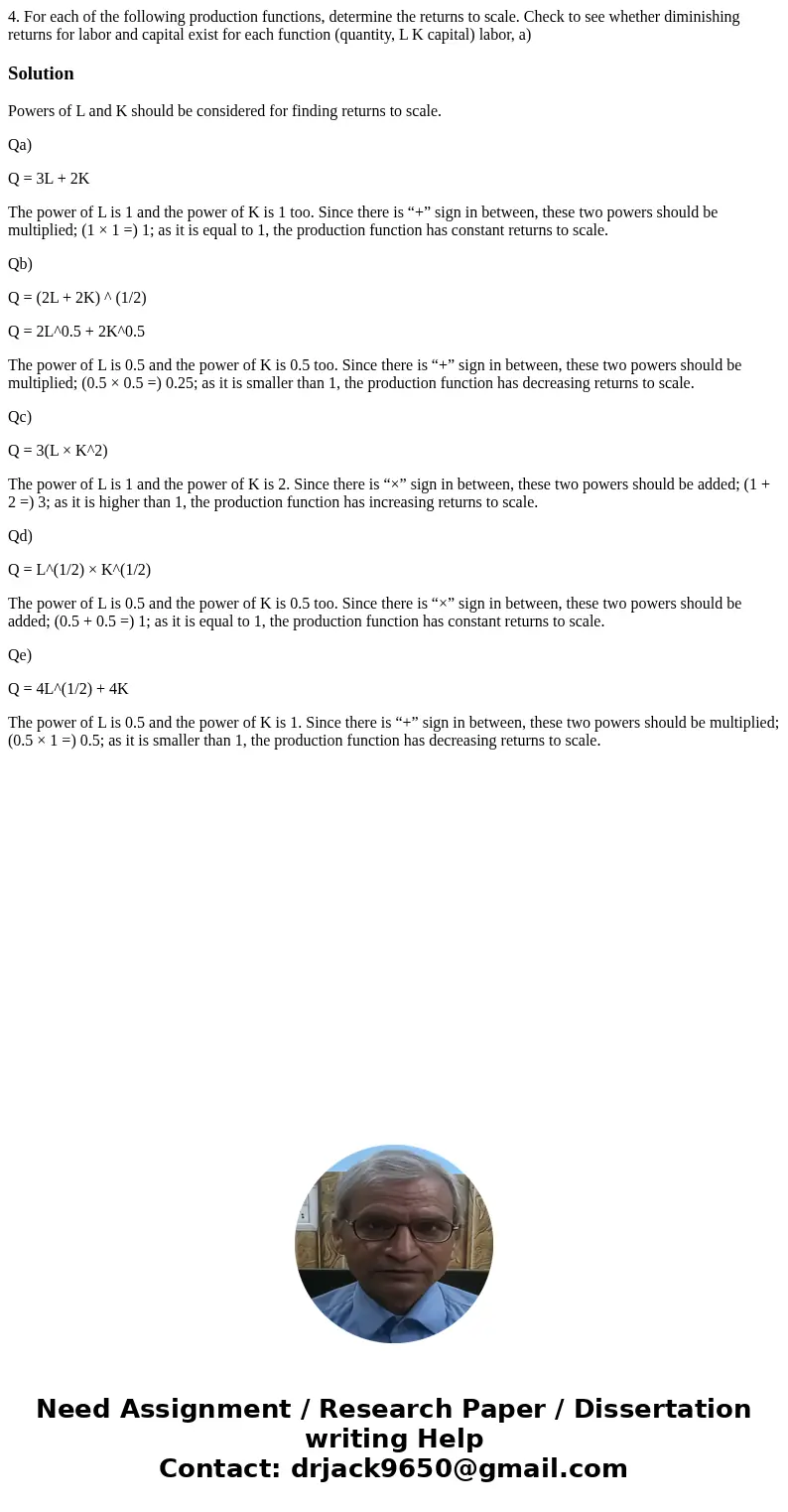4 For each of the following production functions determine t
Solution
Powers of L and K should be considered for finding returns to scale.
Qa)
Q = 3L + 2K
The power of L is 1 and the power of K is 1 too. Since there is “+” sign in between, these two powers should be multiplied; (1 × 1 =) 1; as it is equal to 1, the production function has constant returns to scale.
Qb)
Q = (2L + 2K) ^ (1/2)
Q = 2L^0.5 + 2K^0.5
The power of L is 0.5 and the power of K is 0.5 too. Since there is “+” sign in between, these two powers should be multiplied; (0.5 × 0.5 =) 0.25; as it is smaller than 1, the production function has decreasing returns to scale.
Qc)
Q = 3(L × K^2)
The power of L is 1 and the power of K is 2. Since there is “×” sign in between, these two powers should be added; (1 + 2 =) 3; as it is higher than 1, the production function has increasing returns to scale.
Qd)
Q = L^(1/2) × K^(1/2)
The power of L is 0.5 and the power of K is 0.5 too. Since there is “×” sign in between, these two powers should be added; (0.5 + 0.5 =) 1; as it is equal to 1, the production function has constant returns to scale.
Qe)
Q = 4L^(1/2) + 4K
The power of L is 0.5 and the power of K is 1. Since there is “+” sign in between, these two powers should be multiplied; (0.5 × 1 =) 0.5; as it is smaller than 1, the production function has decreasing returns to scale.

 Homework Sourse
Homework Sourse